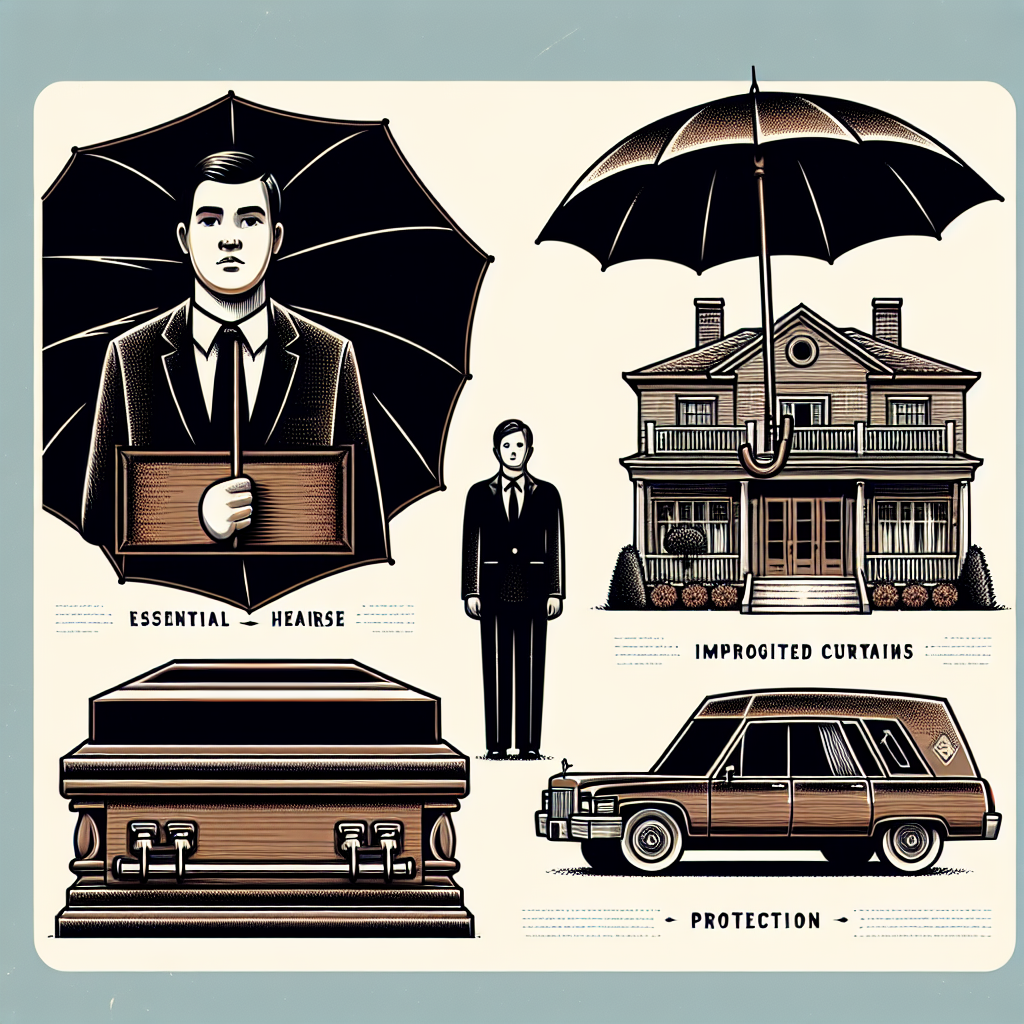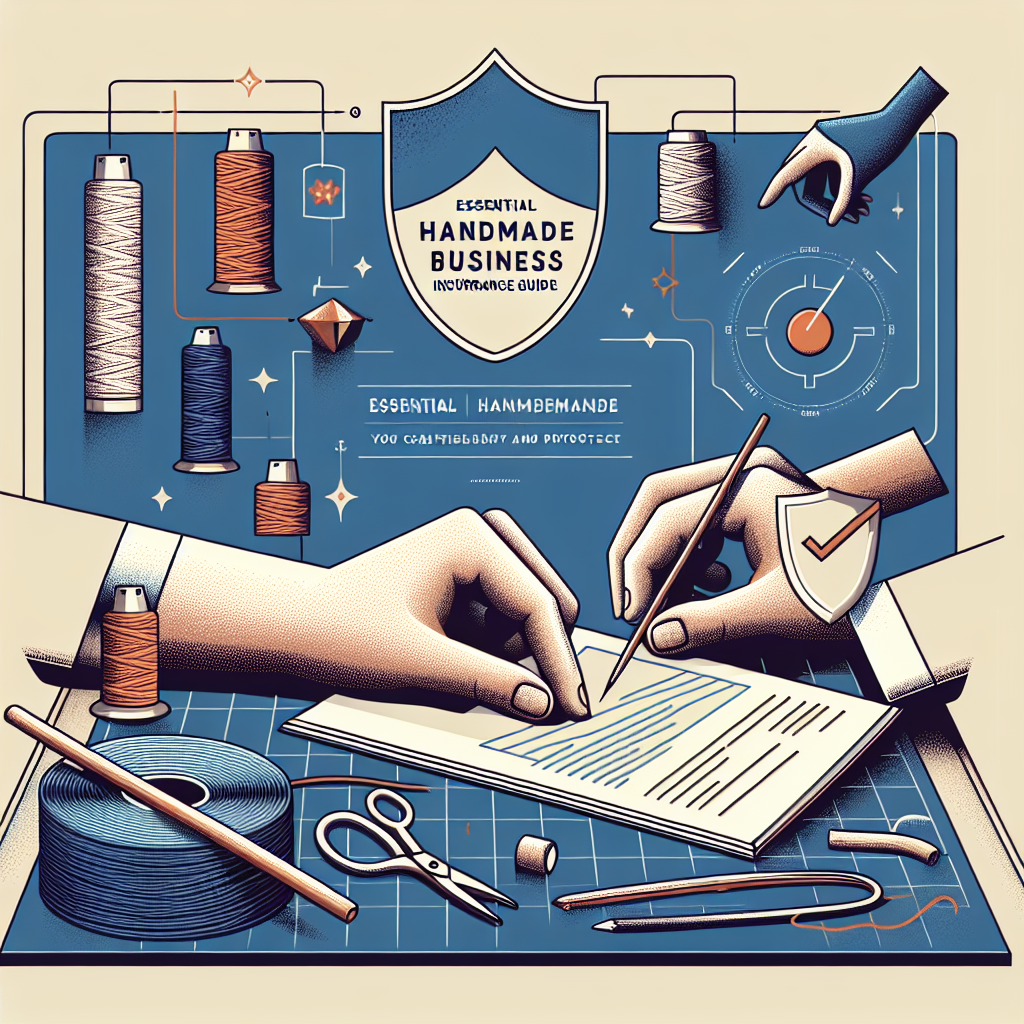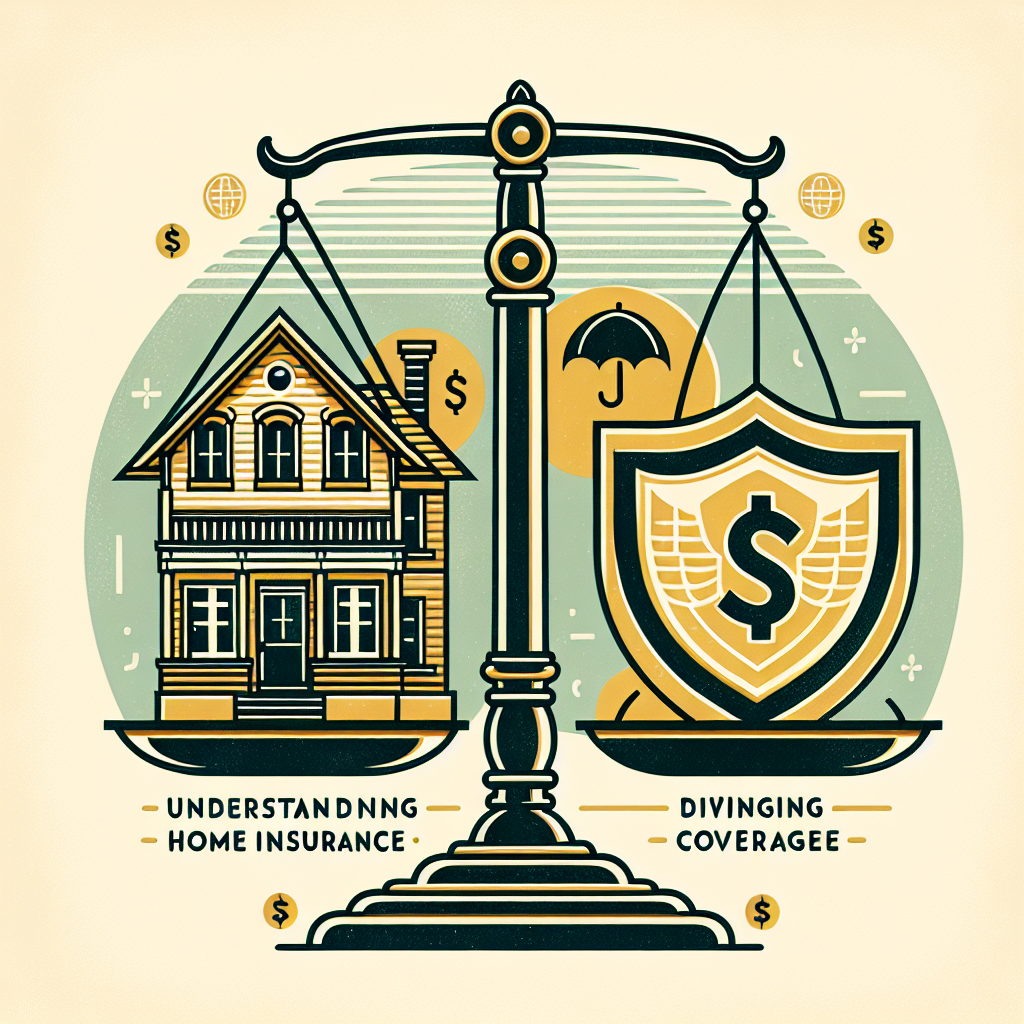Filed under Home Insurance on
Gap in Home Insurance Coverage: How to Fix It

Picture this: a windstorm tears shingles from your roof, rain pours in, and you assume your policy will make you whole—until you discover a sneaky gap in home insurance coverage that leaves thousands of dollars on you. You’re not alone. Many homeowners have solid policies that still miss critical risks. The good news? Most shortfalls are fixable with a mix of smarter limits, targeted endorsements, and a once-a-year policy tune-up. This guide walks you through why coverage gaps happen, where they typically hide, and how to close them without overspending.
What Is a Coverage Gap and Why It Matters
A coverage gap is the mismatch between what you think your homeowners policy will pay and what it actually covers, subject to limits, exclusions, and deductibles. These gaps show up in four main ways:
- Missing coverage: a peril isn’t covered (for example, flood under a standard HO-3 policy).
- Insufficient limits: your dwelling or personal property limits don’t match real-world replacement costs.
- Sublimits and exclusions: jewelry, water backup, or ordinance/code upgrades have low caps or are excluded.
- Settlement differences: actual cash value (ACV) vs. replacement cost value (RCV) leaves you short after depreciation.
Because claims are moments of stress, discovering a shortfall mid-crisis can be financially and emotionally costly. Preventing a gap in home insurance coverage is easier—and cheaper—before a loss than after.
Why Gaps Are Growing Now
Several trends are widening the distance between expectations and reality:
- Construction inflation: Building materials and labor surged dramatically in recent years. Industry cost trackers report double-digit increases since 2020 in many markets, which means coverage limits set years ago may be too low today.
- Climate and catastrophe risk: More frequent severe weather, wildfire risk, and flood events are challenging insurer models. Insurers may adjust deductibles, sublimits, and eligibility, leaving room for a new gap in home insurance coverage unless you update protections.
- Policy complexity: Modern policies include more endorsements, exclusions, and nuanced wording. It’s easy to assume something is covered when it’s not.
- Life changes at home: Renovations, new valuables, short-term rentals, home-based businesses, solar panels, and backyard amenities can outgrow a set-and-forget policy.
Insurance associations and consumer surveys routinely find that many homeowners are underinsured by 10–20% or more. As reconstruction costs climb, that shortfall compounds.
The Most Common Gaps—and How to Fix Each One
Below are the areas where shortfalls most often hide, plus straightforward fixes you can implement with your agent or insurer.
1) Dwelling Coverage Too Low
Problem: Coverage A (dwelling) should reflect today’s cost to rebuild, not the home’s market value. After supply chain shocks and labor shortages, limits set even two years ago may be lagging. If a major loss happens, you could be tens of thousands short.
Fixes:
- Request a fresh replacement cost estimate using current local data on materials and labor.
- Add inflation guard so your limit automatically adjusts during the year.
- Consider extended replacement cost (often +25% or +50%) or guaranteed replacement cost where available.
Tip: If you’ve remodeled kitchens, baths, or added living space, update your limit now. Otherwise, a hidden gap in home insurance coverage may appear at claim time.
2) Personal Property Limits and Sublimits
Problem: Coverage C protects belongings, but sublimits can be surprisingly low on items like jewelry, fine art, collectibles, cameras, firearms, bikes, and musical instruments—sometimes only a few thousand dollars for theft.
Fixes:
- Increase the overall personal property limit to reflect what it would cost to replace belongings new-for-old.
- “Schedule” high-value items (with appraisals and serial numbers) for broader protection and higher limits.
- Ask about blanket coverage for categories (e.g., jewelry up to a per-item/per-occurrence limit without scheduling every piece).
3) Roof Settled at ACV Instead of RCV
Problem: Some policies or endorsements pay roof claims on an ACV basis, subtracting depreciation. An older roof could lead to a fraction of the replacement cost being paid.
Fixes:
- Ask for replacement cost coverage for roof surfacing if available in your state and risk profile.
- Maintain your roof proactively; insurers offer better terms for newer, wind-rated, or impact-resistant roofs.
- In hail-prone regions, clarify if wind/hail losses trigger a separate percentage deductible.
4) Water Backup and Sump Overflow
Problem: Standard policies typically exclude water that backs up through sewers or drains or overflows from a sump. These events are common and expensive.
Fixes:
- Add a water backup/sump overflow endorsement with a meaningful limit (often $5,000–$25,000 or more).
- Install backflow valves and maintain sump pumps with battery backups to reduce risk.
Note: Flood (rising water from outside) is different and usually excluded. That’s a separate policy need (see below).
5) Flood and Earthquake
Problem: Most homeowners policies exclude flood and earthquake, yet both are catastrophic when they strike the wrong location.
Fixes:
- Flood: Consider a National Flood Insurance Program (NFIP) or private flood policy. Even outside high-risk zones, a low-limit, low-cost policy can protect against heavy rain and drainage issues.
- Earthquake: In quake-prone states, explore an earthquake policy or endorsement; understand deductibles, which are typically percentages of Coverage A.
6) Ordinance or Law (Building Code Upgrades)
Problem: After a loss, you must rebuild to current code. Upgrades—sprinklers, wiring, structural, energy—aren’t covered without ordinance or law coverage, or are covered only partially.
Fixes:
- Add or increase ordinance or law coverage to 25–50% of Coverage A, depending on local codes and the age of your home.
- Discuss with a contractor what code upgrades might run in your municipality.
7) Loss of Use (Additional Living Expense)
Problem: If your home is uninhabitable, ALE pays for housing and living costs. Some policies limit ALE to a dollar amount or time frame that doesn’t match local rents or long rebuild timelines.
Fixes:
- Increase the ALE limit or choose “actual loss sustained” where available with reasonable time caps.
- Account for longer rebuilds due to permit backlogs and supply delays.
8) Windstorm and Named-Storm Deductibles
Problem: In coastal and hail regions, wind or named storms can trigger separate percentage deductibles (e.g., 2–5% of Coverage A), which can be very large out-of-pocket costs.
Fixes:
- Know each deductible type and how it applies. A 2% deductible on a $500,000 Coverage A means $10,000 out-of-pocket per event.
- Evaluate whether you can afford a lower percentage for a higher premium, or maintain an emergency reserve fund.
- Mitigate: window protection, roof straps, secondary water barriers, and fortified construction can generate credits.
9) Liability Limits and Personal Umbrella
Problem: Legal and medical costs from injuries on your property or alleged negligence can exceed standard $100,000–$300,000 limits, especially with pools, trampolines, short-term rentals, or large dogs.
Fixes:
- Raise personal liability to $300,000–$500,000 on the homeowners policy.
- Add a personal umbrella policy ($1–$5 million) for broader coverage above auto and home.
- Disclose features that increase risk; undisclosed hazards can complicate claims.
10) Home Business and Short-Term Rentals
Problem: Many policies exclude business property and liability, as well as rental activities. An online shop, freelancing equipment, or listing a room on a rental platform can trigger exclusions.
Fixes:
- Home business endorsement for equipment and liability, or a separate in-home business policy.
- Short-term rental endorsement or a landlord/DP policy if renting full-time or frequently.
- Clarify where coverage starts and stops with platforms; don’t assume platform guarantees replace insurance.
11) Service Line and Equipment Breakdown
Problem: Underground lines (water, sewer, electrical) from street to home and household systems (HVAC, appliances) fail more often than you’d think—and are typically excluded.
Fixes:
- Add service line coverage for excavation, repair, and restoration.
- Add equipment breakdown to cover mechanical/electrical failures and power surges.
12) Cyber and Identity Theft
Problem: Stolen identities, cyberstalking, or online fraud may have limited or no protection under a standard policy.
Fixes:
- Cyber/ID theft endorsements can include expense reimbursement, case management, and some liability protection.
- Enable multi-factor authentication and use a password manager to reduce risk.
How to Find Your Gaps: A 60-Minute Policy Audit
You don’t need to be an expert to uncover problem areas. Use this simple process to identify any gap in home insurance coverage before it becomes a claim-time surprise.
- Pull your declarations page and endorsements: This summary lists limits, deductibles, and add-ons.
- Map coverage A–F: Dwelling, Other Structures, Personal Property, Loss of Use, Liability, Medical Payments. Check each limit against today’s needs.
- Review settlement terms: Confirm replacement cost vs. ACV on dwelling, roof, and personal property.
- Scan sublimits: Jewelry, art, firearms, money/securities, trailers, e-bikes, business property. Are they realistic?
- List exclusions: Flood, earth movement, wear/tear, mold, neglect. Decide what should be added back via endorsements or separate policies.
- Check special deductibles: Windstorm, named storm, hurricane, or hail deductibles, plus any cosmetic damage exclusions for siding/roofing.
- Inventory your belongings: Use a home inventory app or a quick video walk-through; store receipts and appraisals.
- Document home upgrades: Square footage changes, finishes, systems, and safety improvements (alarms, water shutoff valves) that impact pricing and eligibility.
- Ask your agent five “what ifs”: Flooded basement, tree on the roof, house fire, theft of jewelry, and a guest injury. Note where coverage is thin.
- Plan fixes: Prioritize high-impact gaps (dwelling, liability, water backup, ALE) and schedule endorsements now.
The Cost–Benefit: Small Premium, Big Protection
Closing coverage gaps often costs less than expected, especially compared to claim costs. Typical ranges vary by state and carrier, but example ballparks help illustrate:
- Water backup endorsement: Often tens of dollars per year for $5,000–$25,000 in coverage. Typical basement cleanup can run thousands.
- Extended replacement cost (+25%): Sometimes 5–10% of the base premium; if reconstruction runs over by $100,000 after a major loss, this endorsement can be the difference between rebuilding and tapping savings.
- Umbrella policy ($1 million): Frequently a few hundred dollars annually for broad liability protection across home and auto.
- Service line coverage: Often inexpensive relative to excavation and landscaping restoration costs.
Pricing depends on your location, risk profile, and insurer appetite. But the math is often compelling—one modest endorsement can neutralize an outsized, real-world exposure.
Location-Specific Considerations
Your address is destiny for certain risks. Tailor your policy to geography:
- Coastal and wind zones: Mind percentage deductibles, roof settlement terms, and windstorm exclusions. Mitigation (impact windows, fortified roofs) can reduce premiums and claims.
- Wildfire-prone areas: Create defensible space, upgrade vents and roofing, and ask about wildfire mitigation endorsements or eligibility requirements.
- Flood-prone or heavy-rain regions: Even outside mandatory zones, ponding and drainage issues make a low-limit flood policy smart.
- Earthquake regions: Deductibles are high, but so are repair costs. Secure water heaters, brace cripple walls, and consider quake coverage for both dwelling and contents.
- Freeze-prone climates: Install smart water shutoff valves and maintain heat to prevent burst pipes; ask about device credits.
Claims Readiness: Documentation Wins
Insurance pays best when you can prove what you had and what it cost. Set up easy, repeatable documentation so you’re ready on your worst day:
- Home inventory: Video each room, open closets, pan over serial numbers, and store the file in the cloud. Update after major purchases.
- Receipts and appraisals: Keep digital copies for high-value items. Re-appraise fine jewelry and art periodically.
- Contractor estimates: For renovations, keep plans and invoices; they support updated limits and streamline claims.
- Mitigation records: Save proof of maintenance, roof certifications, and device installs that may qualify for credits or support claims.
Work With the Right Insurance Partner
An experienced, responsive agent can help you spot and fix gaps before they cost you. Interview potential partners with focused questions:
- How do you calculate replacement cost for my home, and how often do you update it?
- What endorsements do your clients most commonly add for homes like mine?
- How do wind/hail or named-storm deductibles work in my area?
- What’s my current ALE limit and is it time-limited?
- What sublimits affect my valuables, and how do I schedule items?
- Do you offer extended or guaranteed replacement cost?
- What are my options for water backup, service lines, equipment breakdown, and cyber?
- Should I consider a personal umbrella policy based on my assets and risk?
- What discounts can I earn through mitigation (roof, security, water shutoff) or bundling?
- How often will we review my policy together?
Your Annual Policy Tune-Up
Make coverage review part of your household routine. Update your policy when you:
- Renovate, add square footage, or upgrade major systems.
- Purchase valuable items or inherit jewelry/art.
- Adopt certain breeds of dogs or add a pool or trampoline.
- Start a side business, install solar panels, or rent part of your home.
- See local construction costs jump or hear about building code changes.
- Experience a major life change (marriage, new teen driver, retirement) that shifts liability exposure.
Schedule a short review each year—ideally before renewal—so you can adjust limits and endorsements proactively, not reactively.
Mini Case Studies: How Fixes Play Out
Case 1: The Underinsured Rebuild
A 2,100-square-foot home bought eight years ago carried a $350,000 dwelling limit. After a kitchen fire spread, reconstruction came in at $430,000 due to higher labor and code upgrades. Without extended replacement cost or ordinance coverage, the owners faced a substantial out-of-pocket expense. Adding a 25% extension and 25% ordinance coverage in advance would have shielded them from the overshoot.
Case 2: The Basement Backup
A storm knocked out power to a neighborhood; a sump pump failed and sewage backed up. Cleanup and restoration reached $14,000. The standard policy excluded this, but a $25,000 water backup endorsement costing under a couple hundred dollars per year would have covered most of it.
Case 3: The Jewelry Theft
A small theft resulted in $12,000 of jewelry losses. Policy sublimits capped theft coverage at $1,500. Scheduling favored items for their appraised value would have averted the shortfall and removed some exclusions.
Expert and Industry Perspectives
Insurance educators and consumer advocates consistently highlight underinsurance as a top homeowner risk. Trade associations and catastrophe modeling firms report elevated severe weather losses and greater claim severity tied to higher rebuilding costs. Reconstruction cost indices and builders’ reports have documented substantial materials and labor variability by region. Bottom line: conditions change faster than many policies do, which is why periodic reviews and add-ons matter.
Frequently Asked Questions
Is my market value relevant to setting my dwelling limit?
No. Set Coverage A based on the cost to rebuild with similar materials and labor in your area, not what the home could sell for.
How often should I review my policy?
At least annually and after any renovation, major purchase, or lifestyle change. A quick call can reveal and correct a gap in home insurance coverage before renewal.
Are endorsements worth it?
Often yes. Targeted endorsements like water backup, service line, equipment breakdown, and ordinance or law can be inexpensive relative to potential losses.
Do I need flood insurance if I’m not in a high-risk zone?
Many flood claims occur outside designated high-risk areas. A lower-cost policy with modest limits can still be valuable.
What about my roof—why is settlement type so important?
RCV pays to replace with new materials (subject to policy terms), while ACV subtracts depreciation. On older roofs, ACV can leave big out-of-pocket gaps.
Will mitigation steps lower my premium?
Often. Fortified roofs, impact windows, water shutoff valves, security systems, and wildfire hardening can earn credits and improve insurability.
A Simple Action Plan to Close Gaps This Week
- Run a fresh replacement cost estimate with your agent and add inflation guard plus extended or guaranteed replacement cost if available.
- Increase ALE to match local rents and realistic rebuild timelines.
- Add key endorsements: water backup, ordinance or law, service line, equipment breakdown; consider cyber/ID theft.
- Schedule high-value items and raise liability to $300,000–$500,000; add an umbrella if you have assets to protect.
- Decide on flood/earthquake based on your location’s risk, not just the lender requirement.
- Create or update a home inventory and store it in the cloud.
Final Thoughts
Insurance only works if it matches the risks you actually face. The forces reshaping housing—construction inflation, more frequent severe weather, complex living arrangements—make it easy for even careful homeowners to develop a gap in home insurance coverage without noticing. Fortunately, closing that gap is straightforward: audit your policy, update limits, add targeted endorsements, and recheck annually.
If you do just three things this month, make it these: review your dwelling limit against current rebuild costs, add water backup and ordinance or law if you lack them, and verify your ALE and liability are robust. With those steps, you’ll go a long way toward eliminating a costly gap in home insurance coverage and gaining the peace of mind you intended to buy in the first place.





